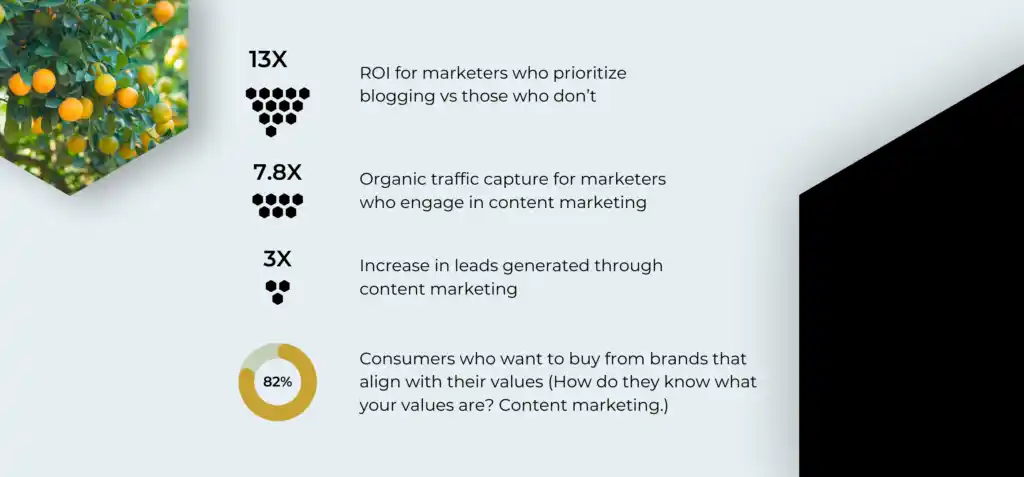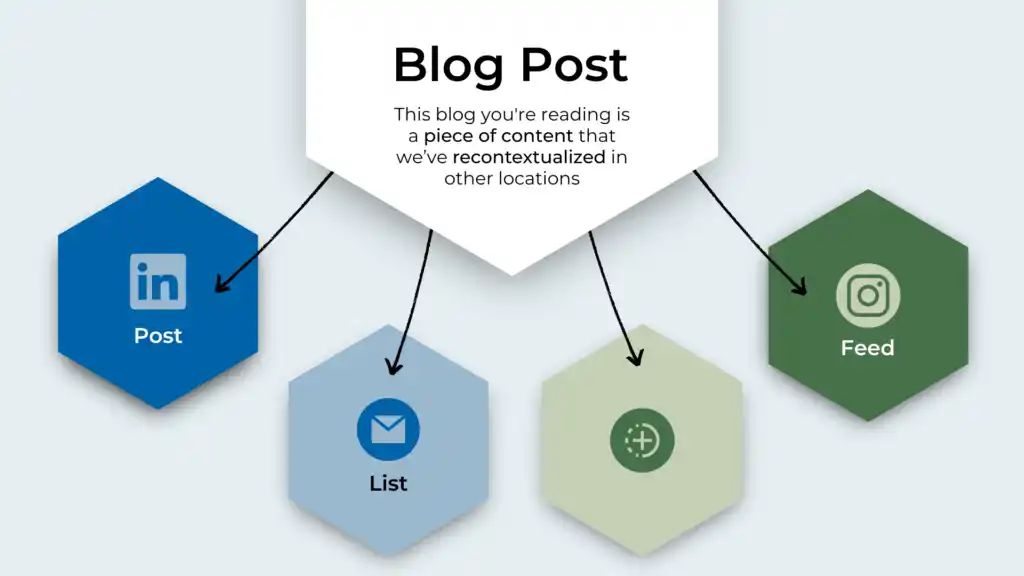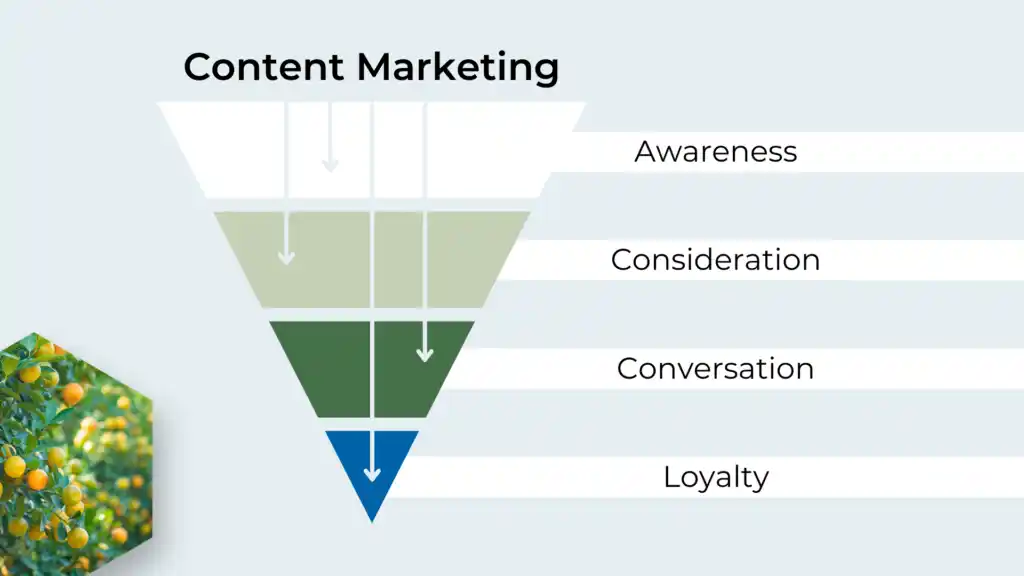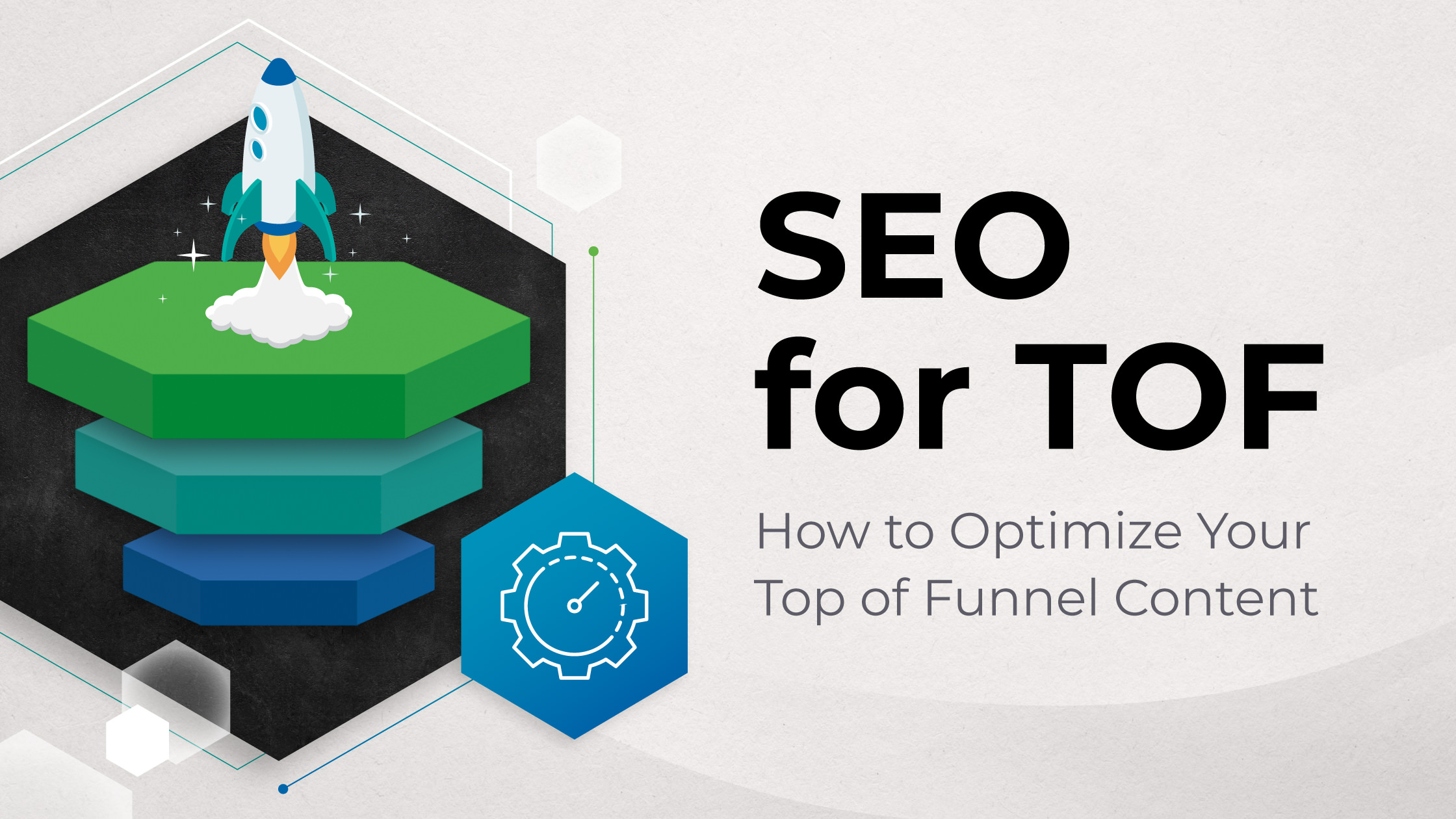
Many of the brands we meet say, “Content marketing? Ugh. Do we have to??”
For some, content marketing seems lofty and unmeasurable (on the contrary, it’s highly measurable). For others, content marketing raises resourcing questions they’re struggling to answer.
While this apprehension is understandable, it doesn’t evaporate stats like:

In today’s Apiary POV, we’re covering:
- What is content marketing?
- Why is content marketing important?
- 11 benefits of content marketing for your business
- The content marketing strategy every CEO or founder can activate today
What is content marketing?
Content is a catch-all term for the digital marketing materials a brand uses to communicate with its total addressable market. The most commonly used content types include:
- Blog posts
- Long and short-form videos
- Social media posts
- E-books
- Whitepapers
- Webinars
- Podcasts
- Emails
Content marketing is the strategic distribution of content, with the goal of attracting and engaging an audience that’s best positioned to convert into a client/customer while retaining existing clients/customers.
Why is content marketing important?
That question might be as rhetorical as we get. It’s tantamount to asking, “Why is marketing important?”
Content marketing is marketing done right.
- How are you building brand awareness?
- How are you actively moving leads through the funnel?
- How are you communicating your values and attracting aligned leads?
- How are you closing any awareness/education gaps your leads have?
- What do leads need to see/hear in order to trust that you’re the best solution to the problem they want to solve?
Much like account-based marketing, content marketing answers these questions. That’s the broad explanation for why it’s so important, but since you’re probably just as detail-oriented as we are, let’s get more precise.
11 benefits of content marketing
As eternal advocates of SEO health, the first few items on our list dig into how content marketing drives SEO. Why are we so fanatical about this?
68% of online experiences begin with a search engine. [Source: Ahrefs]
The most competitive brands don’t relegate SEO to a 30-minute backburner conversation once a month – it’s a top priority for a reason. And SEO and content are inseparable. Here’s why:
1. Improve SEO rankings and organic traffic
Google’s business model depends on a high volume of eyeballs and clicks on their ads, so they need to make the user experience as optimal as possible so folks stick around to view and engage with that ad content. For this reason, Google is primarily interested in three things:
- The technical health of your website (page speed, visual stability of the page, and input interactivity) and how that provides an ideal/inferior user experience. This is the work of technical SEO.
- The likelihood that your content will satisfy the user’s search intent. This is where your content marketing strategy comes in.
- The popularity of your content, and the quality of the sites fangirling over it.
Once keyword research has identified your target keywords (be mindful of keyword difficulty), your content team is then tasked with generating high-quality content that addresses the questions, uncertainties, and desires of your target audience.
With an optimized site that Google can easily crawl, highly-relevant content says, “Hey Goog, your user who just searched for [keyword here] is going to LOVE this result”. In turn, Google will prioritize your content in the search engine results pages (SERP).
0.63% of Google searchers click on results from the second page, so the higher you are on the first page of results, the more organic traffic you’ll receive.
2. Build domain authority & brand authority
In addition to the lead gen benefits we’ll discuss next, when others link to your content, Google interprets links from sites with high domain authority and/or a large volume of sites as confirmation of your credibility. This grows your domain authority.
Domain authority refers to the technical credibility of your domain (an SEO term) and plays a significant role in how high your content ranks in search results, and can also influence the performance of paid campaigns.
The domino effect here is that increased domain authority subsequently enhances your brand authority, which refers to the degree to which you’re viewed as a subject matter expert (preferably, THE expert) in your niche.
The most credible voices in a space are deemed as such because they’re using their voice to address topics that are highly relevant to the people in that space.
And how they are addressing those salient topics is a reflection of their singular perspective, expertise, and values.
There’s really no getting around this. Credibility requires visibility.
Through your LinkedIn posts, weekly/monthly email newsletter, quarterly webinar series, and whatever else is on your editorial calendar (aka: content marketing), your brand is being visible and demonstrating its credibility by:
- Actively engaging in conversations that your leads find meaningful
- Providing valuable content instead of only ever showing up with sales links
- Showing why your viewpoint and skills set you apart from competitors.
The consistency of your content marketing is essential to establishing and maintaining brand authority.
3. Lead generation through referral traffic
Being linked to from other sites nets you the kind of lead generation most marketers adore: the free kind.
That referring source is lending you a portion of their brand affinity and the trust they’ve built with their audience.
The reach of your content exponentially increases when it’s good enough that others are inspired to repost and reshare it with their audiences, which then sends fresh traffic and (assuming, there’s overlap between your audiences) fresh leads.
4. Grow reach and engagement across multiple channels
Content marketing is intended to spread across content types, distribution formats, and platforms. Taken at face value, this kind of creative sprawl is often equated with an inevitably time and labor intensive process.
While we don’t believe in rushing good work, experienced content creators often streamline content creation across a variety of channels by using the Rule of 5 – one core content idea functions as the jumping off point for (at least) 5 unique content placements. For example:
- The blog post you’re reading is a piece of content that we’ve recontextualized in other locations like:
- LinkedIn post
- Instagram stories
- Instagram feed post
- Email list (Not signed up? Quickly fix that here.)

Meeting prospects before they become leads (this is reach) and engaging with them in the manner and location that works best for them (this is what turns prospects into leads and then into MQLs) is what the most effective marketing strategy does.
5. Give customers multiple learning formats
When applying the Rule of 5, you’ll inevitably wind up distributing content in a variety of formats. This is GOOD.
The majority of the population is estimated to be visual learners (this includes reading), but the 30% of us who learn best through listening should not be overlooked.
Content marketing formats need to be varied because the audience you want to reach is not a monolith – they have a varied set of needs and expectations when making an investment decision.
Some want to see a video of your products or services in action. Others are looking for a short list of bullet points they can send to their VP. And others might want to scroll through a detailed blog post with useful tables, charts, or infographics.
There are multiple ways to deliver helpful information. Use them all.
6. Equip brand advocates
Frequent word of mouth referrals from happy customers/clients shortcutting the time and expense of your typical marketing funnel is the dream.
However, even the most effusive brand advocates are not going to recall every single narrative pillar of your brand promise. Additionally, their understanding of your service/product is limited to the ways in which they’ve used it, which can vary widely among different customer segments.
Content marketing helps you leverage the generosity of your brand advocates by giving them a steady supply of high-value content they can pair with any personal recommendations they’re sending out.
7. Keep leads moving through the funnel
We believe in heavily curating your website both for SEO performance and brand definition. We did exactly that a few months back with the rebranding of ApiaryDigital.com.
But long-term business growth doesn’t emerge solely from the clean UX of your domain.
Let’s assume that your website already contains ample SEO-optimized content to move leads through the buying funnel. Great. How do you get qualified website traffic to see that content? Whether organic or paid media, this is what content marketing does.
Particularly for SaaS, fintech, or highly technical brands with long sales cycles, content marketing keeps leads warm as they move through the extended nurture process. In these conditions, the key is to create highly relevant content that keeps people interested and engaged over time.
8. Qualify leads before passing to the sales team
The journey from prospect to a marketing-qualified lead (MQL) who’s ready to move into the sales funnel is powered by the content that the marketing team places in front of that prospect at precise intervals.
Excellent content marketing makes the sales team’s job much easier.
The best content marketing maps to a single phase of the buying funnel. With strategies like email segmenting and deeper ad targeting standing on the foundation of your martech stack and lead nurturing methodologies, content marketing creates a highly customized experience that prepares leads for a smooth handoff to sales.

9. Increase LTV and brand loyalty
Lifetime value (LTV) and brand loyalty boil down to how well you listen and how well you time your response to that listening.
- Are you giving customers exactly what they need right when they need it?
- Have you distinguished between what leads just entering the funnel are experiencing vs the lead who’s been in the funnel for 90 days?
- Do you have a healthy martech stack that ensures the above is unfolding seamlessly, while tracking and analyzing all that resulting data?
Top notch content marketing answers a solid “Yes” to these questions. Sure, this benefits net new acquisition. It also undeniably strengthens existing relationships, instead of forgetting that customers (not just fresh leads) need nurturing, too.
10. Decreased marketing costs
Generating new leads through organic search, referrals, and brand advocates (all results of well-optimized content marketing) is exponentially less expensive than relying on paid media for the rest of your life.
As your brand authority and reach grow, the quality of engagement on your earned and owned channels grows, so that MQLs can increasingly be found and nurtured within organic channels.
11. The marketing investment that appreciates over time
There’s some SEO juice to be had in sustained content creation across a targeted list of keywords over time. As your domain authority strengthens and you’re consistently publishing great content, your Google credibility score grows.
Beyond the SEO implications though, our Apiary consultant-partners often support client-partners with developing content marketing campaigns made up of a disproportionately higher amount of evergreen vs time-sensitive content.
Being active and engaged around timely discussions in your industry can be instrumental in establishing brand authority. We recommend it. And if the bulk of your content is created to be evergreen, content created today will nurture leads who won’t enter the funnel for another 6 or even 12 months. Compounding value.
*BONUS* The content marketing strategy every CEO or founder can activate
Here’s a quick tip straight from Apiary’s very own playbook:
Don’t underestimate CEO/founder thought leadership.
Even with the most invested senior leadership team, usually the CEO/founder is the person in the organization who spends the most time thinking about your brand’s:
- business strategy
- market opportunity
- value proposition
- audience
Not sure what your content marketing calendar should feature? Go talk to the CEO for 30 minutes and an experienced content marketer can pull out dozens of content ideas, all of which can fan out across at least 5 channels.
Skilled marketers can sustain 5 channels of activity with bite-size access to your brand’s CEO/founder.
*EXTRA TIP* Don’t fill your content calendar with only product-focused content pieces. How do you see the landscape of your vertical? What are you doing to support your team’s wellbeing? “Humans do business with humans” is a cliché for a reason.
TL;DR summary on content marketing
- Content marketing is directly connected to improvements in SEO rankings and organic search traffic
- Content marketing is necessary for establishing and maintaining brand authority, and is almost always exponentially less expensive than paid advertising
- If content marketing has been difficult for your brand, our guess is that you have a talent issue, not proof that “content marketing doesn’t work”. (It does. We see it every day.)
- Use the Rule of 5 to turn a single idea into content that spreads across 5 marketing channels





